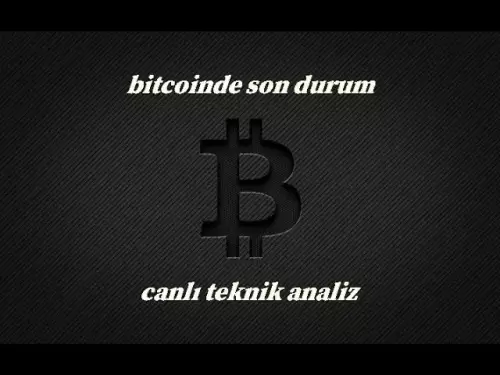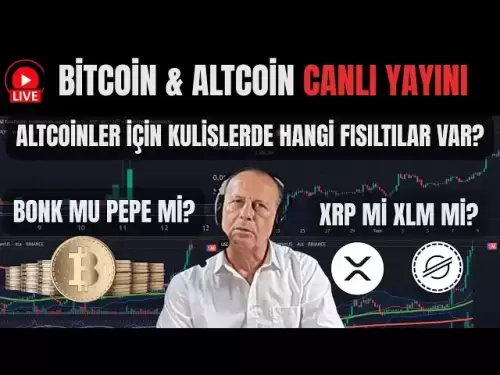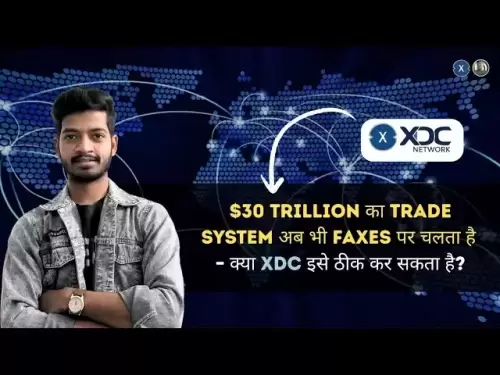-
 Bitcoin
Bitcoin $117,991.5647
-0.03% -
 Ethereum
Ethereum $2,966.4808
0.18% -
 XRP
XRP $2.8076
0.64% -
 Tether USDt
Tether USDt $1.0003
0.00% -
 BNB
BNB $689.9050
-0.63% -
 Solana
Solana $162.0407
-0.80% -
 USDC
USDC $0.9999
0.00% -
 Dogecoin
Dogecoin $0.1995
-1.51% -
 TRON
TRON $0.3001
-1.21% -
 Cardano
Cardano $0.7426
3.25% -
 Hyperliquid
Hyperliquid $47.7978
2.84% -
 Stellar
Stellar $0.4411
16.52% -
 Sui
Sui $3.4267
0.15% -
 Chainlink
Chainlink $15.3148
0.07% -
 Bitcoin Cash
Bitcoin Cash $506.5880
-1.91% -
 Hedera
Hedera $0.2222
12.41% -
 Avalanche
Avalanche $21.2049
1.67% -
 UNUS SED LEO
UNUS SED LEO $9.0606
-0.19% -
 Shiba Inu
Shiba Inu $0.0...01325
-0.86% -
 Toncoin
Toncoin $2.9979
0.32% -
 Litecoin
Litecoin $94.3717
1.13% -
 Polkadot
Polkadot $3.9873
-0.29% -
 Monero
Monero $336.1497
0.92% -
 Dai
Dai $0.9999
-0.01% -
 Uniswap
Uniswap $8.5189
-0.60% -
 Ethena USDe
Ethena USDe $1.0005
-0.04% -
 Pepe
Pepe $0.0...01236
-0.92% -
 Bitget Token
Bitget Token $4.4002
-0.23% -
 Aave
Aave $303.5433
1.05% -
 Bittensor
Bittensor $391.1314
-0.35%
What happens to a smart contract if the blockchain forks?
A blockchain fork splits the chain, causing smart contracts to exist on both chains with potential risks like replay attacks and divergent execution.
Jul 11, 2025 at 08:15 am

Understanding Blockchain Forks and Their Impact
A blockchain fork occurs when a blockchain splits into two separate chains, often due to changes in the network's protocol or consensus rules. Forks can be either planned (soft forks or hard forks) or accidental, resulting from network issues or disagreements among developers and miners. When such a split happens, all data up to the point of the fork remains identical on both chains. However, any transactions or smart contracts created after the fork are processed independently on each chain.
Smart contracts are self-executing agreements with terms written directly into lines of code. These contracts operate autonomously once deployed, without the need for intermediaries. The execution of these contracts is entirely dependent on the underlying blockchain's state and consensus mechanism.
How Smart Contracts Function Post-Fork
After a blockchain fork, smart contracts that existed before the fork will exist on both chains. This means that if a contract was deployed at block 100, and the fork occurs at block 200, then both chains will have the same contract with the same history up to block 200. However, any interactions with the contract after the fork will only affect the chain on which they occur.
This raises several important questions:
- Will the contract behave the same on both chains?
- Could this lead to unintended consequences?
- What happens if someone exploits this duplication?
The behavior of the contract depends heavily on how it interacts with external data sources, events, and transactions. If no new transactions are sent to the contract post-fork, both versions remain identical. But as soon as activity resumes on one or both chains, the contract's state begins to diverge.
Risks Associated With Contract Execution on Forked Chains
One major risk involves replay attacks, where a transaction valid on one chain could be maliciously or mistakenly repeated on the other. For example, if a user sends ETH to a contract on Chain A, an attacker could replay that transaction on Chain B, potentially causing unintended actions.
To mitigate this, developers often implement replay protection mechanisms. One common method is including a unique identifier in each transaction to differentiate between the two chains. Another approach involves using different signatures or nonces per chain.
Another concern arises when oracles or external data feeds interact with smart contracts. Oracles might provide different inputs on each chain, leading to inconsistent contract behavior. Developers must ensure that their contracts do not rely on off-chain data that could vary unpredictably post-fork.
Hard Forks vs. Soft Forks: Implications for Smart Contracts
In the case of a soft fork, backward compatibility is preserved. Nodes running older software can still validate new blocks, meaning smart contracts continue to function without disruption. Any changes introduced by the soft fork typically enhance features or tighten rules but do not alter existing contract logic.
Conversely, a hard fork introduces changes that are not backward compatible. Older nodes cannot validate blocks produced under the new rules. As a result, smart contracts may face unexpected behaviors if the hard fork alters opcodes, gas costs, or contract execution logic.
Developers should audit contracts thoroughly before and after a hard fork to ensure no breaking changes have been introduced. Tools like Mythril or Slither can help detect vulnerabilities introduced by protocol upgrades.
Practical Steps for Developers During a Fork
If a fork is imminent, developers should consider the following steps:
- Monitor Protocol Changes: Stay updated with EIPs (Ethereum Improvement Proposals) or similar documents relevant to the blockchain platform.
- Audit Existing Contracts: Use static analysis tools to detect potential vulnerabilities or incompatibilities with new protocol rules.
- Implement Replay Protection: Ensure that transactions cannot be duplicated across chains unintentionally.
- Test on Testnets: Deploy contracts on testnets that simulate the fork environment to observe real-world behavior.
- Communicate with Users: Inform users about possible disruptions and advise them to avoid interacting with contracts until stability is confirmed.
Handling Disputes and Conflicts in Forked Environments
When a blockchain splits, disputes may arise over which chain represents the "true" version. In such cases, smart contracts might end up executing conflicting outcomes on each chain. For instance, a decentralized exchange contract could process trades differently depending on which chain's token balances are considered valid.
Governance models play a crucial role here. Projects with robust governance frameworks can vote on which chain to support, minimizing confusion. Additionally, multi-signature wallets or timelocks can offer a safety net, allowing teams to pause contract execution until a decision is reached.
However, if no clear governance exists, disputes can lead to permanent fragmentation. Developers should design contracts with contingency plans, such as emergency halting mechanisms or fallback logic, to handle such scenarios gracefully.
FAQ
Q: Can a smart contract be deleted after a blockchain fork?
A: No, once deployed, a smart contract cannot be deleted unless it includes a self-destruct function. Even after a fork, both chains retain the contract unless explicitly removed via such functionality.
Q: Do decentralized applications (dApps) need to redeploy smart contracts after a fork?
A: Not necessarily. Contracts deployed before the fork will exist on both chains. However, dApp developers may choose to deploy new versions tailored to each chain's updated rules or features.
Q: How do multisignature wallets handle forks?
A: Multisig wallets will also exist on both chains post-fork. Transactions made on one chain won't affect the other unless deliberate action is taken. Users should manage keys carefully to avoid accidental cross-chain operations.
Q: Are there tools available to check contract compatibility with a new fork?
A: Yes, platforms like OpenZeppelin Defender, Tenderly, and MythX allow developers to analyze contracts for compatibility and security issues related to upcoming forks or upgrades.
Disclaimer:info@kdj.com
The information provided is not trading advice. kdj.com does not assume any responsibility for any investments made based on the information provided in this article. Cryptocurrencies are highly volatile and it is highly recommended that you invest with caution after thorough research!
If you believe that the content used on this website infringes your copyright, please contact us immediately (info@kdj.com) and we will delete it promptly.
- HYPE Token & Hyperliquid: Riding the DeFi Wave with Open Interest
- 2025-07-13 16:30:16
- Unilabs Finance Takes Center Stage: Leaving Pepecoin and Floki Inu in the Dust?
- 2025-07-13 16:30:16
- Crypto Investors Ditching Meme Coins for BlockchainFX: The Smart Money Move?
- 2025-07-13 17:05:16
- Bitcoin, Indian Investors, and Tax Filing: Navigating the Crypto Boom
- 2025-07-13 17:05:16
- Ethereum's Resistance Level: Bullish Signals Point to Potential Breakout
- 2025-07-13 17:05:17
- Whale Watching: XRP's Historic Highs and the Whale Control Factor
- 2025-07-13 17:05:17
Related knowledge

Psychology of trading Bitcoin contracts
Jul 13,2025 at 02:50am
Understanding the Emotional Rollercoaster of Bitcoin Futures TradingBitcoin contract trading, especially in the form of futures, introduces a high lev...

Best time of day to trade Bitcoin contracts?
Jul 13,2025 at 05:29am
Understanding Bitcoin Contracts and Their VolatilityBitcoin contracts, particularly futures contracts, are derivative instruments that allow traders t...

How to use Fibonacci levels in Bitcoin contract trading?
Jul 13,2025 at 08:07am
Understanding Fibonacci Levels in TradingFibonacci levels are a technical analysis tool used by traders to identify potential support and resistance z...
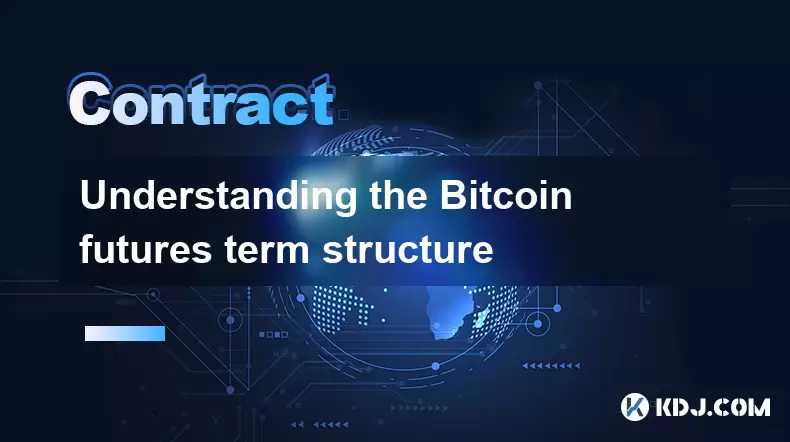
Understanding the Bitcoin futures term structure
Jul 13,2025 at 08:28am
What is Bitcoin Futures Term Structure?The Bitcoin futures term structure refers to the relationship between the prices of Bitcoin futures contracts w...
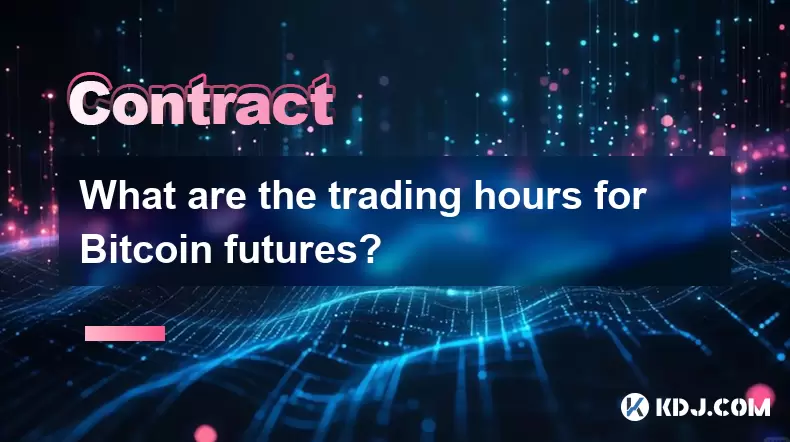
What are the trading hours for Bitcoin futures?
Jul 13,2025 at 12:14pm
Understanding Bitcoin Futures Trading HoursBitcoin futures are derivative contracts that allow traders to speculate on the future price of Bitcoin wit...

How to withdraw profits from a futures account?
Jul 13,2025 at 07:07am
Understanding Futures Accounts and Withdrawal MechanicsIn the cryptocurrency space, a futures account is used to trade contracts that derive their val...

Psychology of trading Bitcoin contracts
Jul 13,2025 at 02:50am
Understanding the Emotional Rollercoaster of Bitcoin Futures TradingBitcoin contract trading, especially in the form of futures, introduces a high lev...

Best time of day to trade Bitcoin contracts?
Jul 13,2025 at 05:29am
Understanding Bitcoin Contracts and Their VolatilityBitcoin contracts, particularly futures contracts, are derivative instruments that allow traders t...

How to use Fibonacci levels in Bitcoin contract trading?
Jul 13,2025 at 08:07am
Understanding Fibonacci Levels in TradingFibonacci levels are a technical analysis tool used by traders to identify potential support and resistance z...

Understanding the Bitcoin futures term structure
Jul 13,2025 at 08:28am
What is Bitcoin Futures Term Structure?The Bitcoin futures term structure refers to the relationship between the prices of Bitcoin futures contracts w...

What are the trading hours for Bitcoin futures?
Jul 13,2025 at 12:14pm
Understanding Bitcoin Futures Trading HoursBitcoin futures are derivative contracts that allow traders to speculate on the future price of Bitcoin wit...

How to withdraw profits from a futures account?
Jul 13,2025 at 07:07am
Understanding Futures Accounts and Withdrawal MechanicsIn the cryptocurrency space, a futures account is used to trade contracts that derive their val...
See all articles





















